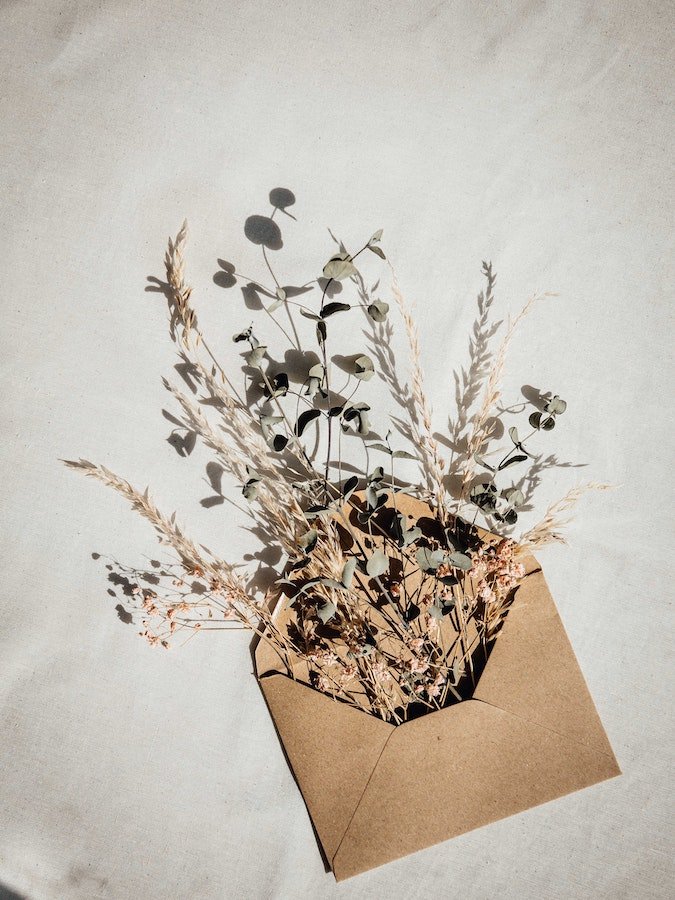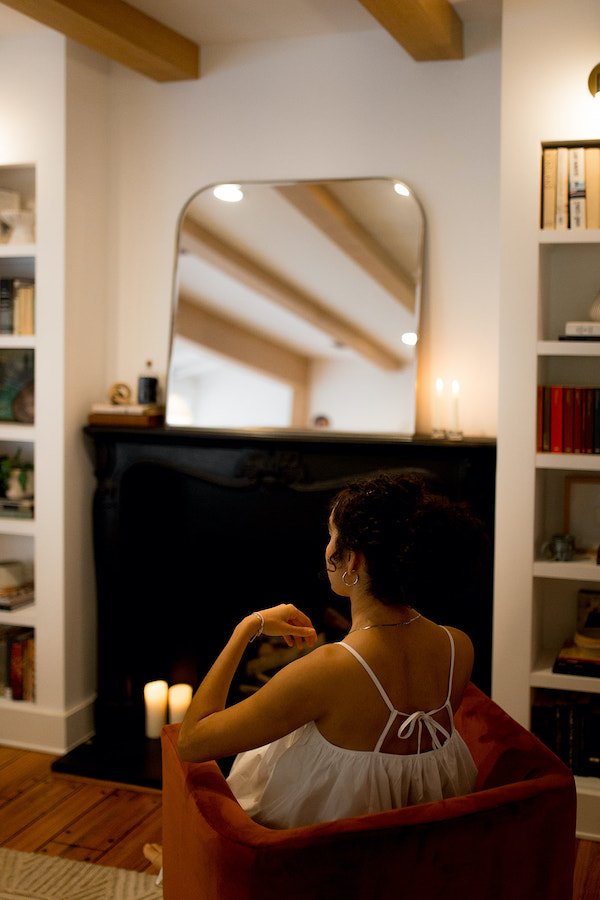
Why I Wrote A Letter to My Younger Self To Find Closure
I started journaling when I was nine after finding empty journals lying around the house, waiting to be filled with words. Writing helped me make sense of my thoughts and express the emotions I couldn’t verbalize. Experiencing such strong feelings at a young age meant journaling, for me, was like untying several knots of rope. Then a family member found my journal and read my thoughts back to me, and I never opened a journal again. The mere thought of being humiliated and exposed was enough to stop writing. And so I didn’t. I bottled up my emotions, no longer having a way to release them.
“Experiencing such strong feelings at a young age meant journaling, for me, was like untying several knots of rope.”
When I began therapy a few years ago, a part of my healing journey included recalling events from my childhood, many of which I’d forgotten. My therapist mentioned that some adult triggers result from unmet childhood needs. She suggested I try to journal, assuring me that it would help guide our sessions and give me the courage to be vulnerable again. But I hadn’t picked up a journal since the day my privacy was invaded, and the mere thought of writing made me feel anxious. I didn’t follow up on her suggestion. I couldn’t bear being vulnerable with writing or myself again.
As time passed, I realized pieces of me had been missing because writing was one of my first loves. I couldn’t quite pinpoint this emptiness, but it felt as if I was full of reckless emotions with no way to express them. When I read a story about how letter writing brought two family members together, I knew it was a sign for me to try and write again despite my fears.
“I pictured the current version of myself having a conversation with that younger version of me.”
I sat on the floor of my walk-in closet with soft music playing. I thought back to when I was younger, remembering all of my responsibilities at such a young age. Being the oldest daughter meant taking on tasks that sometimes took me away from my childhood. It meant hearing about family issues and trying to fix others’ problems.
I pictured the current version of myself having a conversation with that younger version of me. I had more emotions than I could account for as a child. What would I want to tell her? What would she say to me? From that space, I began to write.
I wrote a letter to my younger self, telling her how we would navigate difficult experiences and overcome challenges. I wrote to her about our first major breakup: “You silly girl. You are not asking for too much. I want you to demand more.”
“I wrote to her about our first major breakup: “You silly girl. You are not asking for too much. I want you to demand more.” ”
I affirmed myself, both as a child and an adult. I never knew there were so many unspoken words and undealt with emotions I hadn’t processed. “I’m so proud of you,” I wrote to my younger self. “You are deserving of love.” When I finished writing, I sighed with relief. All of the things I had needed space to say, I finally had it. For the first time, I felt seen. And it was all thanks to that letter.
For others who may want to write a letter to themselves to find closure, here are a few tips. Your letter doesn’t have to be eloquent or verbose and remember that this practice is simply for you. Write whatever comes to mind, and most importantly, write from your heart.
Create a Comfortable Space
Finding a private space where you can be alone for a while is important. The closet worked best for me, but you may find another space in your home more comfortable. Turn your phone off and set it aside, so you’re not tempted to use it to distract yourself. You may also want to play a favorite playlist or some instrumental Lofi music that relaxes your body and mind, making it easy for thoughts to flow. If you’re finding the process especially difficult, try writing only for the length of one song or playlist.
Feel Your Emotions
Writing to your younger self and reflecting on childhood memories can cause so many different emotions to arise, some of which you may not have words for. To help articulate what you’re feeling, I recommend the feelings wheel for identifying these emotions. Know that more than one emotion can coexist, and you are not wrong for feeling any of them.
“Think of emotions as information. They are a guide map for our hearts, leading us to what is broken or hurting. ”
Some of the things I felt when writing to my younger self were shame and guilt. I began to feel sorry for all she encountered. I instantly wanted to shield and protect her from things she didn’t need to experience. I also remembered how innocent she was. The sound of her laughter. What brought her joy. Her spunky personality. These feelings are normal to have. This is where true authenticity and vulnerability stem from. Think of emotions as information. They are a guide map for our hearts, leading us to what is broken or hurting. From this place, we can write.
Have a Plan
Before you start writing, check in with a close friend or therapist, making them aware that you may need support after you finish your letter. This can also be a practice you complete in a therapy session if you want professional guidance.
Think about what you’ll do with this letter as well. Will you read it back? Keep it? Throw it away? You don’t have to decide immediately, and you may change your mind when you finish, but having a plan in advance can be helpful.
Today, my letter sits in my journal on my bookshelf. I didn’t throw it out. But I don’t reread it; I don’t need to. Writing that letter felt like conquering one of my toughest battles and also like gaining closure for unresolved wounds. I’ve found freedom on the other side. It was also the catalyst for writing more consistently and overcoming that fear. I now own more journals than I can count.
Brianna Robles is a Brooklyn, NY-based lifestyle freelance writer. Her creative writing platform, Writing My Wrongs, encourages people to share their full story. When she’s not writing, you can find her performing at open mics and trying new restaurants.


